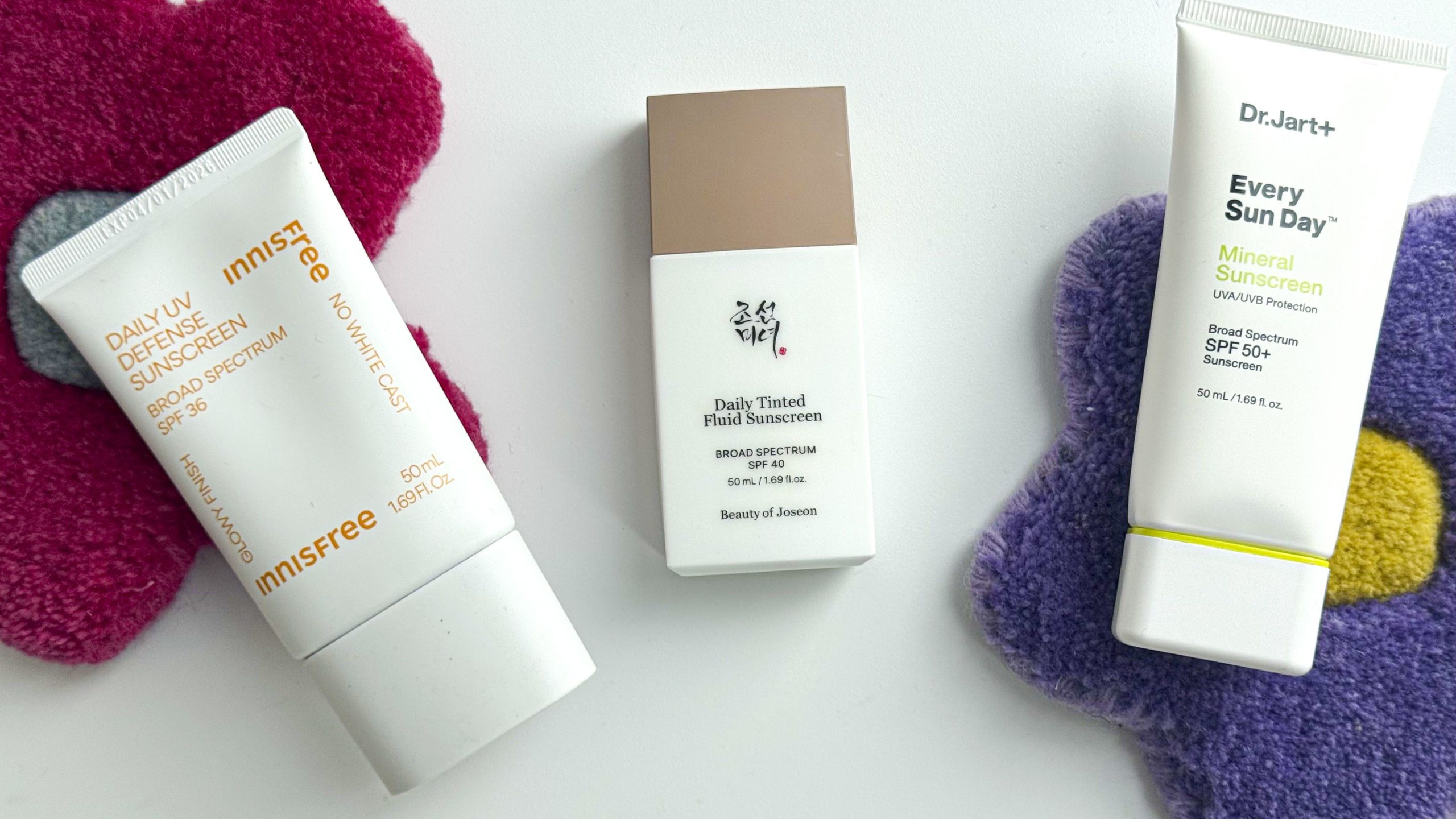
Sensitive skin requires careful handling—especially when it comes to sun protection. The wrong sunscreen can lead to redness, irritation, breakouts, or even allergic reactions. That’s why Korean sunscreens have become a favorite for people with delicate skin. Known for their lightweight textures, innovative formulas, and calming ingredients, these sunscreens offer broad-spectrum protection without the heavy, greasy feel.
In this guide, we’ll highlight the best Korean sunscreen for sensitive skin, explain what ingredients to look for (and avoid), and share how to fit sunscreen into your broader skincare routine.
Why Choose Korean Sunscreen?
Korean skincare places a strong emphasis on prevention, hydration, and barrier support—key priorities for sensitive skin. Korean sunscreens often feature:
-
Gentle, non-irritating UV filters
-
Added skin-soothing ingredients like centella asiatica, green tea, or madecassoside
-
Non-comedogenic, lightweight textures
-
No white cast, even on deeper skin tones
Moreover, Korean sunscreens are often tested for skin compatibility and are formulated without alcohols, fragrances, or harsh preservatives commonly found in Western sunscreens.
What to Look for in a Sunscreen for Sensitive Skin
If you have sensitive skin, your ideal sunscreen should be:
✅ Fragrance-free
✅ Alcohol-free
✅ Non-comedogenic
✅ SPF 30 or higher
✅ Broad-spectrum (UVA & UVB protection)
✅ Mineral-based or hybrid UV filters
Ingredients to love:
-
Zinc oxide & titanium dioxide (for mineral protection)
-
Centella asiatica (soothing)
-
Madecassoside (anti-inflammatory)
-
Panthenol (barrier repair)
-
Green tea extract (antioxidant)
Ingredients to avoid:
-
Denatured alcohol
-
Fragrance/parfum
-
Harsh essential oils
-
Oxybenzone or avobenzone (can be irritating for some)
Top 5 Best Korean Sunscreens for Sensitive Skin
Here are some of the most loved and dermatologist-recommended Korean sunscreens that are safe for even the most reactive skin types.
| Product | SPF Rating | Key Ingredients | Texture | Ideal For |
|---|---|---|---|---|
| Etude House SoonJung Mild Defence Sun Cream | SPF 49 PA+++ | Panthenol, Madecassoside | Creamy, non-greasy | Dry to sensitive skin |
| Beauty of Joseon Relief Sun: Rice + Probiotics | SPF 50+ PA++++ | Rice extract, Niacinamide | Lightweight, hydrating | All skin types |
| Round Lab Birch Juice Moisturizing Sun Cream | SPF 50+ PA++++ | Birch sap, Niacinamide | Lotion-like, fast-absorbing | Dehydrated sensitive skin |
| Innisfree Daily Mild Sunscreen | SPF 50+ PA+++ | Green tea, Sunflower oil | Lightweight gel-cream | Sensitive + combination skin |
| PURITO Daily Go-To Sunscreen | SPF 50+ PA++++ | Centella Asiatica, Tocopherol | Lotion, reef-safe formula | Acne-prone, reactive skin |
How to Use Korean Sunscreen for Maximum Benefit
Korean sunscreens are designed for daily use and to sit well under makeup or other skincare layers. Here’s how to apply for the best protection:
-
Use as the final step of your morning routine.
-
Apply a generous amount (about two fingers’ length).
-
Gently pat into the skin rather than rubbing.
-
Reapply every 2–3 hours when outdoors.
If you’re unsure how to combine sunscreen with your other products, consider learning How to Layer Serums and Moisturizers properly to avoid pilling or reduced effectiveness.
Morning Routine Example with Korean Sunscreen
| Step | Product Type | Purpose |
|---|---|---|
| 1 | Gentle Cleanser | Clean skin without irritation |
| 2 | Hydrating Toner | Preps skin, balances pH |
| 3 | Soothing Serum (e.g., Centella, Panthenol) | Calms inflammation |
| 4 | Lightweight Moisturizer | Adds hydration without heaviness |
| 5 | Korean Sunscreen | Protects from UV damage |
Tips for Choosing the Right Sunscreen
-
Patch test new sunscreens behind your ear or on your wrist before using on your face.
-
Start with mineral formulas if you’re highly sensitive.
-
Hybrid sunscreens (mineral + chemical filters) are a good middle ground if you dislike the white cast.
-
Stick to fragrance-free options labeled “for sensitive skin” or “hypoallergenic.”
-
Check for reef-safe or EWG-verified labels for extra peace of mind with ingredients.
Benefits of Korean Sunscreens for Sensitive Skin
-
Superior texture: Lightweight, breathable formulas perfect for daily wear
-
Hydrating benefits: Many formulas double as moisturizers
-
Less likely to clog pores: Designed with acne-prone and sensitive users in mind
-
Innovative UV filters: Korean sunscreens often feature newer, more skin-friendly chemical filters that aren’t yet FDA-approved in the U.S. (e.g., Tinosorb, Uvinul A Plus)
FAQs
Q1: Can I skip moisturizer if my Korean sunscreen is hydrating?
If your sunscreen is rich enough and your skin feels comfortable, yes. However, drier skin types may still benefit from a separate lightweight moisturizer underneath.
Q2: Do I need to reapply sunscreen indoors?
If you’re exposed to windows or screens for long hours, reapplication is still recommended, though less frequently than outdoors.
Q3: Are all Korean sunscreens safe for sensitive skin?
No. Look for those labeled as “mild,” “non-irritating,” or “suitable for sensitive skin.” Always read the full ingredient list.
Q4: Can I wear makeup over Korean sunscreen?
Yes. Most Korean sunscreens are designed to work well under makeup due to their smooth, non-greasy finish.
Q5: What’s the difference between mineral and chemical sunscreen?
Mineral sunscreens sit on the skin’s surface and reflect UV rays. Chemical sunscreens absorb UV rays and transform them into heat. Mineral filters like zinc oxide are generally gentler for sensitive skin.
Final Thoughts
Finding the best Korean sunscreen for sensitive skin doesn’t have to be overwhelming. With clean formulas, hydrating benefits, and superior sun protection, these sunscreens are a perfect match for anyone with irritation-prone or reactive skin.
Focus on sunscreens that are fragrance-free, alcohol-free, and enriched with calming botanicals like centella asiatica and madecassoside. Pair it with a gentle skincare routine, and you’ll be protecting your skin from both the sun and unnecessary irritation.
A well-layered skincare routine is just as important—especially when sunscreen is your final step. If you’re not sure where sunscreen fits into your skincare regimen, read up on How to Layer Serums and Moisturizers to get the most out of your daily routine.

